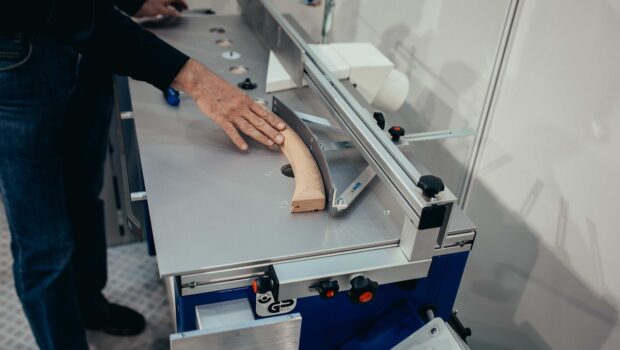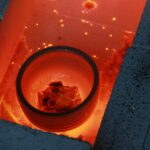Preserving Metal Artworks: How Artisans Ensure Metals Don’t Rust
Metal artworks stand as enduring testaments to human creativity and skill, but their longevity hinges on effective preservation techniques. Artisans throughout history have developed intricate methods to safeguard these treasures from the ravages of rust, ensuring that what metals don’t rust remains pristine for generations to come.
Understanding the Threat of Rust
Rust, the natural oxidation of metals exposed to oxygen and moisture, poses a significant threat to metal artworks. It not only compromises their aesthetic appeal but also threatens their structural integrity over time.
What Metals Do Artisans Use?
Artisans use a variety of metals in their craft, each chosen for its unique properties and suitability for different artistic applications. The following are some of the metals commonly used by artisans:
- Gold: Known for its luster and malleability, gold is often used in fine jewelry, sculpture, and decorative arts. Its ability to be hammered into thin sheets (gold leaf) allows for intricate detailing.
- Silver: Silver is valued for its brightness and ductility. It is commonly used in jewelry, tableware, and decorative items. Like gold, it can be polished to a high shine or oxidized for a more antiqued look.
- Copper: Copper is appreciated for its warm reddish-brown color and excellent conductivity. It is used in sculptures, architectural elements, and functional items like pots and pans. Copper also develops a protective patina over time.
- Brass: Brass, an alloy of copper and zinc, combines the durability of copper with the golden hue of zinc. It is used in musical instruments, decorative hardware, and sculpture due to its attractive appearance and ease of casting.
- Bronze: Bronze, an alloy of copper and tin (and sometimes other metals), is known for its strength, durability, and ability to hold intricate details. It has been used for centuries in sculptures, monuments, and functional art pieces.
- Steel: Steel is an alloy primarily composed of iron and carbon, with other elements such as chromium, nickel, and manganese added for specific properties. It is widely used in sculptures, architectural elements, and functional items due to its strength and versatility.
- Aluminum: Aluminum is valued for its lightweight, corrosion resistance, and ability to be easily shaped and finished. It is used in modern sculpture, outdoor installations, and functional art pieces.
- Stainless Steel: Stainless steel, an alloy of iron, chromium, and sometimes other metals, is highly resistant to corrosion and staining. It is used in outdoor sculptures, architectural features, and kitchenware due to its durability and sleek appearance.
- Titanium: Titanium is prized for its strength, light weight, and corrosion resistance. It is used in high-end jewelry, sculpture, and aerospace applications where these properties are beneficial.
However, Artisans select metals based on their desired aesthetic, functional requirements, durability, and ability to work with the material. Each metal brings its own unique characteristics to the artistic process, influencing the final appearance and longevity of the crafted piece.
Choosing the Right Metals
The journey to preserving metal artworks begins with selecting metals resistant to rust. Alloys like stainless steel, bronze, and certain types of aluminum are favored for their innate resistance to oxidation. However, These choices form the foundation of enduring art pieces that withstand the test of time.
Surface Preparation: The Crucial First Step
However, Before any protective measures can be applied, meticulous surface preparation is essential. Artisans meticulously clean and smooth the metal surfaces to remove contaminants and imperfections that could undermine the adhesion of protective coatings.
Applying Protective Coatings
One of the most effective methods artisans employ to combat rust is the application of protective coatings. These coatings, ranging from traditional varnishes to modern polymeric films, create a barrier between the metal and its environment. Each application is a delicate balance of preserving the artwork’s original appearance while fortifying it against rust’s insidious advance.
Innovative Techniques in Conservation
However, Advancements in conservation science have introduced innovative techniques to preserve metal artworks. Controlled environments, such as microclimate enclosures and humidity-controlled storage, shield delicate pieces from the environmental factors that accelerate rust formation.
Ongoing Maintenance and Monitoring
Preservation does not end with initial treatment. Artisans and conservators emphasize the importance of ongoing maintenance and monitoring. Regular inspections allow for early detection of corrosion and prompt intervention to mitigate its effects, ensuring that what metals don’t rust remains true.
Safeguarding Artistic Legacies
In the realm of metal artworks, preservation is both an art and a science. Artisans’ dedication to protecting what metals don’t rust ensures that these cultural treasures continue to inspire and captivate audiences worldwide. Through careful craftsmanship and innovative techniques, they secure a future where metal artworks stand as resilient symbols of human ingenuity and creativity.
However, In the intricate world of art preservation, the quest to safeguard what metals don’t rust is a testament to humanity’s enduring commitment to preserving cultural heritage for generations to come.

















I cannot tell you how excited I am to get your book. I'm trying to write a story involving Reunion…